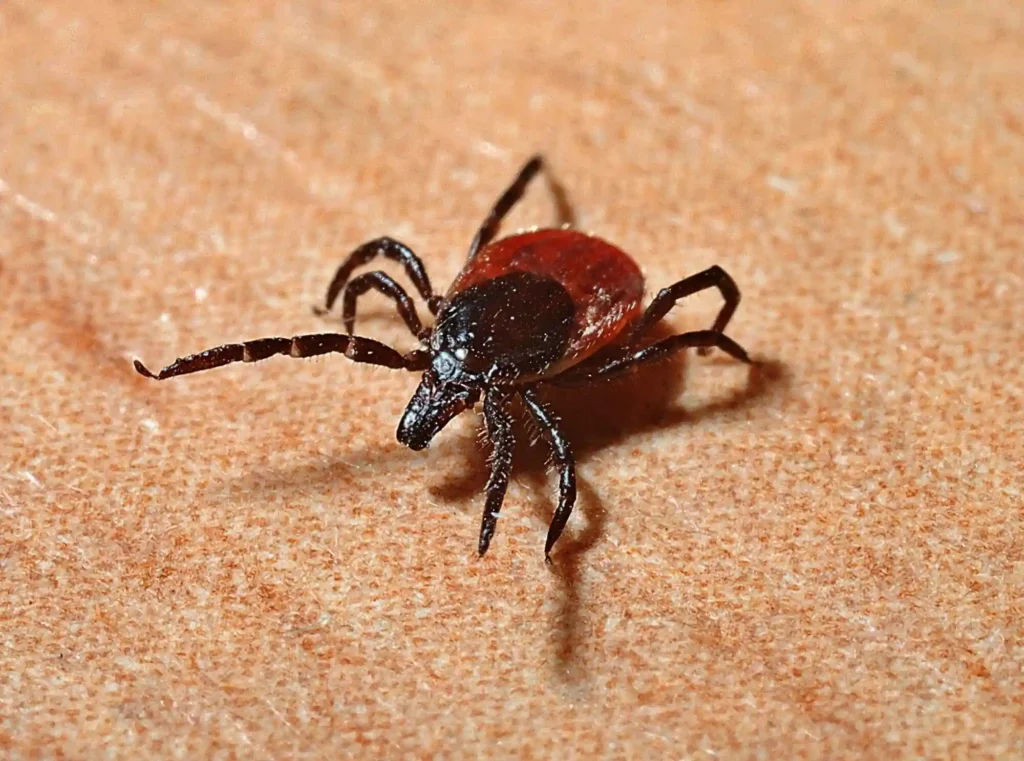The bacterium Borrelia burgdorferi causes Lyme disease, which is known to be a tick-borne illness. Deer ticks or infected black-legged ticks transmit Lyme disease to humans.
These tiny arachnids are commonly found in wooded and grassy areas and can latch onto the skin of humans and animals, including pets.
While Lyme disease is treatable with antibiotics, early detection and prevention are key to minimizing the risk of infection.
In this article, we’ll explore how to check for ticks in hair and discuss strategies for preventing Lyme disease.
Understanding the Risk of Lyme Disease
Lyme disease is prevalent in many regions of the United States, particularly in the Northeast, Mid-Atlantic, and Upper Midwest. Ticks are most active during the warmer months. That is, typically from April to September when outdoor activities such as hiking, camping, and gardening are common.
However, ticks can be active year-round in milder climates. So it’s essential to remain vigilant and take precautions whenever you’re in areas where ticks may be present. Learn more about Lyme disease and its effect on your health and sleep at RX Lyme.
Checking for Ticks in Hair
Ticks can attach themselves to any part of the body, including the scalp and hair. This makes it important to thoroughly check for ticks after spending time outdoors. Here are the steps you can take to check for ticks in hair:
Use a Fine-Toothed Comb
After spending time in areas where ticks may be present, carefully comb through your hair with a fine-toothed comb. Start at the scalp and work your way down to the ends of your hair.
Pay close attention to areas where ticks are likely to hide, such as:
- Behind the ears
- Along the hairline
- At the nape of the neck
Check for Tick Bites
Look for signs of tick bites, such as redness, swelling, or irritation on the scalp or skin. Ticks can be as small as a poppy seed. So it’s essential to inspect your scalp and hair thoroughly for any signs of tick activity.
Conduct a Visual Inspection
After combing through your hair, carefully inspect your scalp and hair in a well-lit area, using a mirror if necessary. Look for any unusual bumps, dark spots, or specks that may indicate the presence of ticks.
Ticks may appear as small, dark-colored insects or as engorged, swollen ticks if they have been feeding.
Use Your Fingers
Gently run your fingers through your hair, feeling for any unusual bumps or textures. Ticks can be difficult to see, especially in thick or curly hair. Using your fingers to feel for ticks can help ensure thorough detection.
Enlist the Help of a Partner
If possible, ask a family member or friend to assist you in checking for ticks in your hair. They provide an extra set of eyes and hands to help ensure that no ticks are overlooked.
It might be easier to check for ticks in each other if you went out as a big group and are suspecting each member might have contracted ticks while on the hike or during camping.
Preventing Lyme Disease
In addition to checking for ticks in your hair, there are several strategies you can take to prevent Lyme disease and reduce your risk of tick bites. It isn’t enough to remove them every time ticks attach themselves to you.
Wear Protective Clothing
It’s great to be an outdoorsy person since you are healthier for it. But it can also be dangerous to spend a lot of time outdoors since there are all sorts of dangers lurking there.
Make sure to protect yourself when you go outdoors for long periods, especially in wooded or grassy areas.
Wear long sleeves, long pants, and closed-toe shoes to minimize skin exposure. Tuck your pants into your socks or boots and wear a hat to protect your scalp.
Use Insect Repellent
Apply insect repellent containing DEET or picaridin to exposed skin and clothing to repel ticks and other biting insects. Make sure to be careful when applying these chemicals since they are quite toxic and shouldn’t be inhaled in large quantities or ingested.
Follow the manufacturer’s instructions carefully and reapply repellent as needed, especially if you’re sweating or swimming.
Stay on Trails
There is a reason why the trail authorities do so much to keep the trails free and clear of vegetation. It’s to protect you from all the little critters, snakes, and ticks that might be lurking about.
Stick to well-maintained trails and avoid walking through tall grass, brush, or leaf litter where ticks may be hiding. Walk through the center of trails to minimize contact with vegetation and ticks.
Perform Tick Checks
After spending time outdoors, thoroughly check your entire body, including your scalp, hair, and clothing, for ticks. Use a mirror or ask someone to help you check hard-to-reach areas like your back and behind your ears.
Do this for everyone in the group, so that no one with ticks on them can infect the rest of the group.
Shower and Change Clothes
After coming indoors, promptly shower and change into clean clothes to remove any ticks that may be on your body or clothing. Tumble dry clothes on high heat for at least 10 minutes to kill any ticks that may be hiding.
Treat Pets
You might love your pet, but remember that ticks can easily hitch a ride into your home on pets. Be sure to check your pets for ticks regularly and use veterinarian-approved tick prevention products to protect them from tick bites.
How To Check for Ticks in Hair and Prevent Lyme Disease
We spend so much indoors that we forget the outdoors can be quite a dangerous place, especially in forested or wooded areas. That’s why it’s important to learn how to check for ticks in hair and do the checks diligently every time you go outdoors for long periods. Stay safe out there, folks.
Enjoyed this article? Don’t forget to check out the rest of our blog for related content and keep learning. Knowledge is power, after all.






